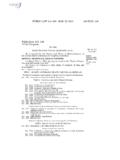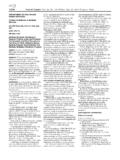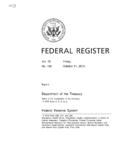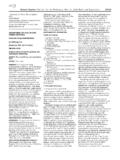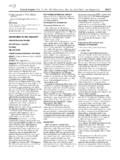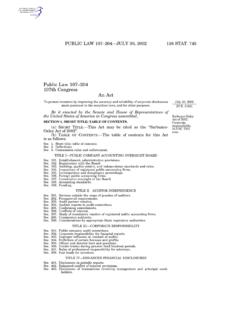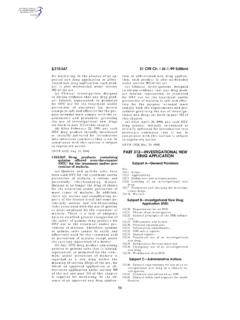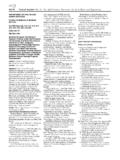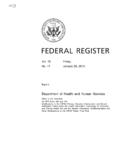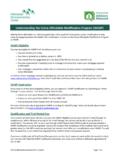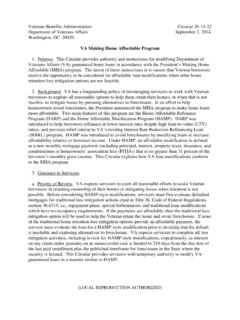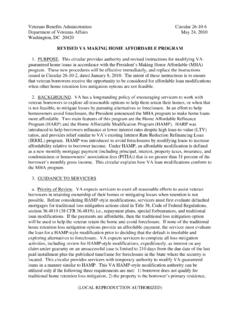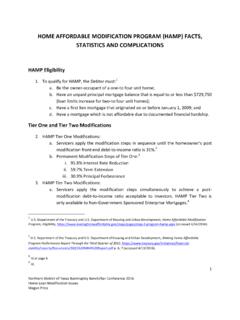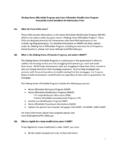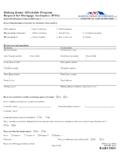Transcription of DISTRICT OF MASSACHUSETTS M.D.L. NO. 10-2193-RWZ …
1 1 I use Bank of America to refer collectively to defendant Bank of America, and itssubsidiary, defendant BAC home Loans Servicing, STATES DISTRICT COURTDISTRICT OF NO. 10-2193-RWZIN RE BANK OF AMERICA home affordable modification PROGRAM (HAMP)CONTRACT LITIGATIONMEMORANDUM OF DECISIONS eptember 4, 2013 ZOBEL, this consolidated litigation, individual borrowers from around the country claimthat Bank of America1 mismanaged their requests for loan modifications under theHome affordable modification Program ( HAMP ). Plaintiffs now seek to resolve theissue of liability on a classwide basis. They move to certify twenty-six classes, one foreach state in which named plaintiffs is a federal government program designed to prevent mortgageforeclosures.
2 Through HAMP, the government has encouraged mortgage lenders andservicers to provide loan modifications for eligible borrowers. The Department ofthe Treasury has administered HAMP by issuing regulations in the form of HAMPG uidelines and Supplemental Directives. See Program Guidance, home AffordableModification Program, .jsp (lastCase 1:10-md-02193-RWZ Document 272 Filed 09/04/13 Page 1 of 312visited Aug. 22, 2013).The HAMP modification process begins with a preliminary evaluation by themortgage servicer of the borrower s eligibility. From April 2009 through early 2010,under the Treasury Department s Supplemental Directive 09-01, the servicer could usea borrower s unverified statements about her financial situation to do that preliminaryevaluation.
3 See Dep t of the Treasury, Supplemental Directive 09-01, at 5 (Apr. 6,2009), available at If the preliminary evaluation indicated the borrower was eligible for aHAMP modification , the servicer would then offer the borrower a Trial Period Plan( TPP ). Each TPP established a trial modification period, usually lasting three that trial period, the borrower was obligated to make reduced monthlypayments, provide any required financial documents, and meet other stated the borrower complied with the required terms and remained otherwise eligible, then(according to each TPP) the servicer would provide a permanent HAMP permanent modification would become effective on the modification EffectiveDate, the first day of the month after the last trial period payment was of America is one of many mortgage lenders and servicers that participatedin HAMP and issued TPPs.
4 Plaintiffs are a number of individual borrowers who claimthat they entered into TPPs serviced by Bank of America and made all the required trialpayments, but did not receive either a permanent loan modification or a written denialof eligibility by the modification Effective Date. They assert claims for breach ofcontract, breach of the implied covenant of good faith and fair dealing, promissoryCase 1:10-md-02193-RWZ Document 272 Filed 09/04/13 Page 2 of 312 The states involved are Alabama, Alaska, Arizona, California, Colorado, Connecticut, Florida,Georgia, Illinois, Kentucky, Maryland, MASSACHUSETTS , Michigan, Missouri, Nevada, New Jersey, NewYork, North Carolina, Ohio, Oregon, Pennsylvania, Rhode Island, Texas, Virginia, Washington, andWisconsin.
5 Plaintiffs seek to certify their breach of contract claim and their implied covenant claim inevery state listed, either separately or as a single claim. They seek to certify their promissory estoppelclaim in every state listed except for North Carolina and Virginia, and their unfair and deceptive acts andpractices claim in every state listed except for Alabama, Georgia, Ohio, Texas, and Virginia. See Docket# 210, Ex. Supplemental Directive 09-01 was superseded by Supplemental Directive 10-01, whichrequired servicers to obtain fully verified financial information to determine eligibility before issuing anyTPP with an effective date after June 1, 2010. See Dep t of the Treasury, Supplemental Directive10-01 (Jan.)
6 28, 2010), available , and unfair and deceptive acts and named plaintiffs include forty-three individuals and couples from twenty-sixdifferent states. They now seek to certify twenty-six different classes, one from eachstate they represent,2 on the issue of liability. They propose the following classdefinition: All individuals with home mortgage loans on properties in [state] whoseloans have been serviced by Bank of America and who, since April 13,2009, have entered into a Trial Period Plan Agreement with Bank ofAmerica and made all trial payments required by their Trial Period PlanAgreement, other than borrowers to whom Bank of America tenderedeither:(a) A home affordable Mortgage Agreement sent to the borrowerprior to the modification Effective Date specified in the Trial Period PlanAgreement; or(b) A written denial of eligibility sent to the borrower prior to the modification Effective Date specified in the Trial Period Plan # 208 (Mot.
7 At 1. The term Trial Period Plan Agreement is defined to includeonly TPPs issued under Supplemental Directive 09-01. Id. at StandardFederal Rule of Civil Procedure 23 governs class certification. The DISTRICT courtCase 1:10-md-02193-RWZ Document 272 Filed 09/04/13 Page 3 of 314may only certify a class after a rigorous analysis of the prerequisites established byRule 23. Smilow v. Sw. Bell Mobile Tel. Sys., 323 32, 38 (1st Cir. 2003); see alsoWal-Mart Stores, Inc. v. Dukes, 131 S. Ct. 2541, 2551 (2011). Under Rule 23(a), aparty seeking class certification must show that:(1) the class is so numerous that joinder of all members is impracticable;(2) there are questions of law or fact common to the class;(3) the claims or defenses of the representative parties are typical of the claimsor defenses of the class; and(4) the representative parties will fairly and adequately protect the interests ofthe R.
8 Civ. P. 23(a). These four requirements are known as numerosity, commonality,typicality, and adequacy. See Smilow, 323 at addition, the party seeking certification must show that one of therequirements of Rule 23(b) is met. Plaintiffs seek to proceed under Rule 23(b)(3), whichallows a class action if the court finds that the questions of law or fact common to classmembers predominate over any questions affecting only individual members, and that aclass action is superior to other available methods for fairly and efficiently adjudicatingthe controversy. Fed. R. Civ. P. 23(b)(3). When appropriate, an action may be brought or maintained as a class actionwith respect to particular issues. Fed. R. Civ. P. 23(c)(4).
9 Here, plaintiffs seek to certifytheir twenty-six classes only as to liability; they propose that damages should beresolved separately in subsequent proceedings. Cf. Smilow, 323 at 41 ( [E]ven ifindividualized determinations were necessary to calculate damages, Rule 23(c)(4) ..would still allow the court to maintain the class action with respect to other issues. ).Case 1:10-md-02193-RWZ Document 272 Filed 09/04/13 Page 4 of achieve certification, plaintiffs must affirmatively demonstrate that they havemet the requirements of Rule 23. Wal-Mart, 131 S. Ct. at 2551. [T]hat is, [they] mustbe prepared to prove that there are in fact sufficiently numerous parties, commonquestions of law or fact, etc. not explicitly mentioned in Rule 23, one essential prerequisite for classcertification is that any proposed class must be ascertainable.
10 In other words, the classmust be defined by objective criteria that make it administratively feasible for the courtto determine whether a particular individual is a member. 7A Charles Alan Wright etal., Federal Practice & Procedure 1760 (West 2013); Matamoros v. Starbucks Corp.,699 129, 139 (1st Cir. 2012); Donovan v. Philip Morris USA, Inc., 268 1, 9(D. Mass. 2010). Plaintiffs proposed classes are defined by objective criteria primarilythe state where the individual s property was located, the identity of the servicer, thetype of TPP the individual received, whether the individual made trial payments, andwhether Bank of America sent a loan modification or a written denial by the specifieddate. Plaintiffs have presented expert testimony showing that individuals meeting theseobjective criteria can be identified by relatively efficient searches on a Bank of Americainternal database called MHA Summary.
